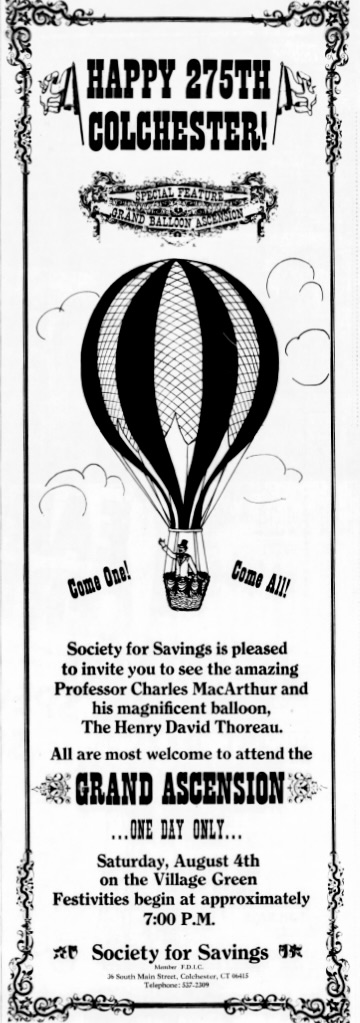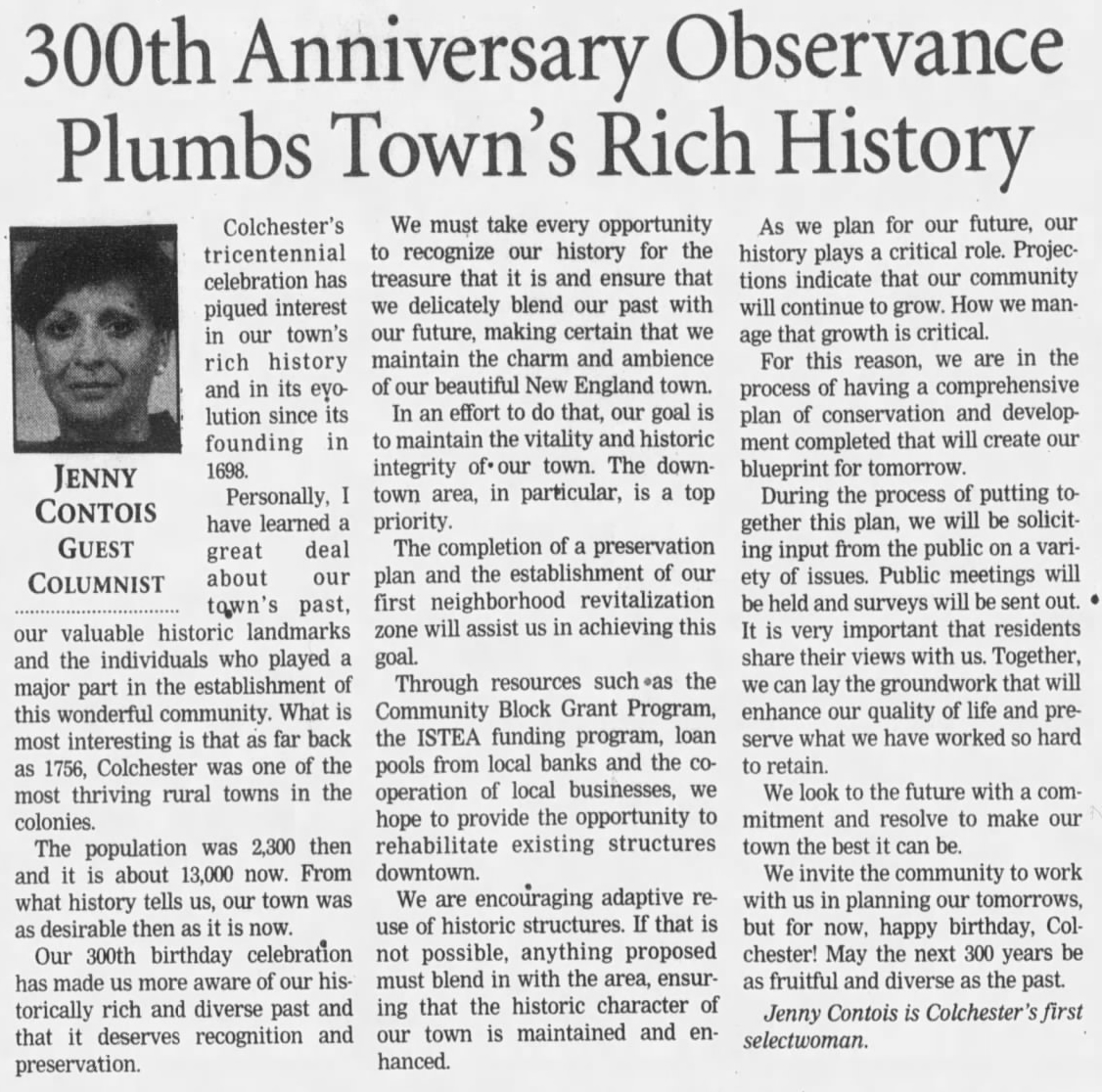A for Anniversary
ANNIVERSARY Celebrations of the Founding of Colchester, Connecticut

On October 13, 1698, the court in the county of Hartford of the Colony of Connecticut allowed new settlers including Nathaniel Foote III, Michael Taintor II, and Samuel Northam to establish a township that would become the town of Colchester.
The Reverend John Bulkeley was officially named the minister of the first church in Colchester by 1703. The original meetinghouse was located on Old Hebron Road, and by 1714 a new church was built where the Colchester Federated Church is located today. In 1723, it was voted that the Burying Ground should be cleared and fenced.
In the early 1700s, the town government was formed, and approval was given for the establishment of the first “ordinary” (tavern) in Colchester. Other businesses such as a grist mill and saw mill were created and town roads were laid out and completed. Records show there were 201 enslaved people in town in 1774, as some white townspeople owned slaves to work their lands and in their households.
However, by 1800, all but 30 slaves in Colchester were freed, and in 1848 slavery was abolished in Connecticut.
In 1803, Bacon Academy was built, and the town had a total of nine district schools in Colchester, with five in Westchester. In addition, a “School for Colored Children” was created.
Over the decades, there have been many changes in Colchester. People moved in and out of town as farming declined and larger mills were built. In the mid-1800s, Irish and German immigrants were brought into town to work in the factories. By the early 1900s, many Jewish immigrants from Europe were resettled here and labored as farmers, factory workers, and merchants. The library and fire department were built for the public good. During the 1930’s-40’s, tourists came here to visit the “Catskills of Connecticut”.

The Town Green is the heart of Colchester where many community events are held that draw people together. The freeway construction of Route 2 in the late 1960s-early 1970s made it easier for people to live in a more rural area and be able to commute to jobs in bigger cities like Hartford, Middletown and New London. Today, over 325 years after the settling of Colchester, the population has grown to approximately 15,500 people.
Colchester, Connecticut ~ “Where Tradition Meets Tomorrow”
“A for Anniversary" Extra Documentation
